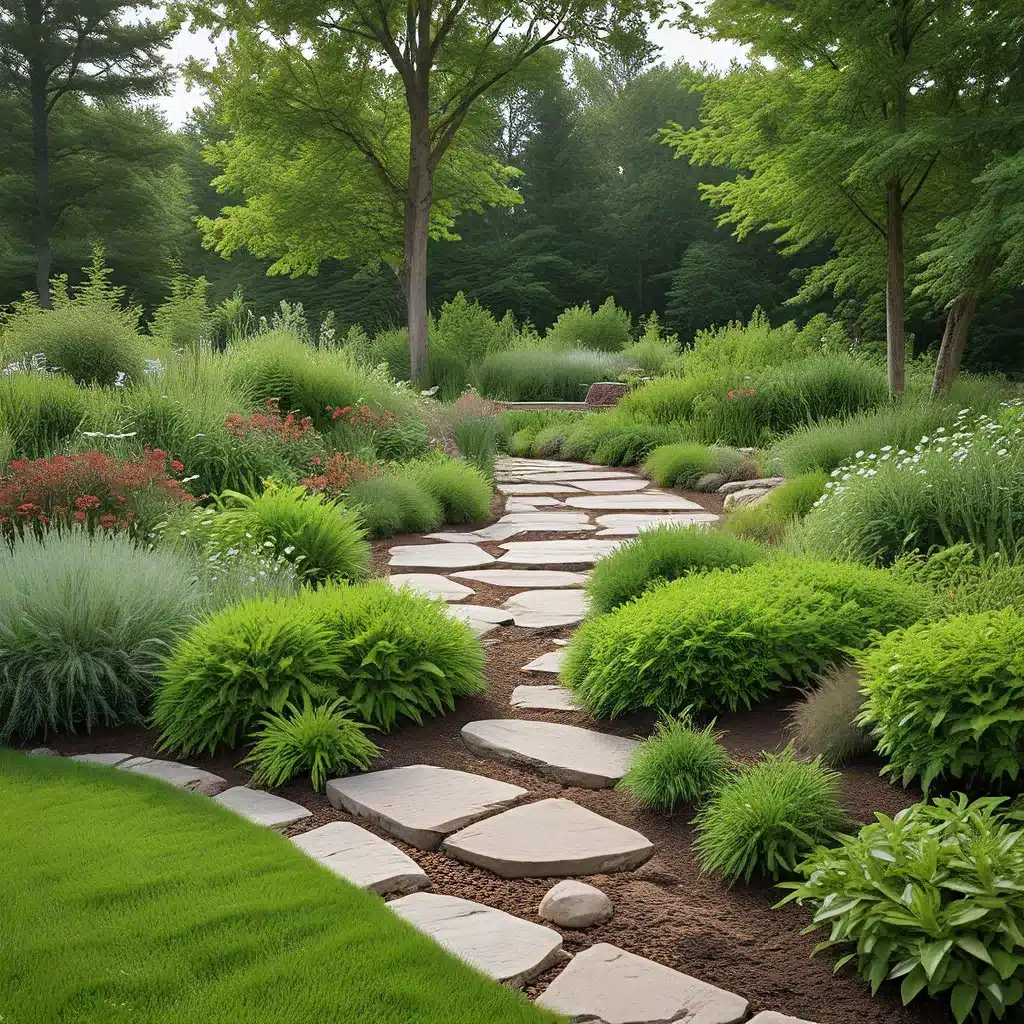
As someone who’s always been fascinated by the natural world, I can’t help but notice the incredible potential it holds for improving our energy efficiency. And when it comes to landscaping, I’ve discovered that there’s a whole world of sustainable solutions just waiting to be explored.
Harnessing the Power of Plants
Let me start by talking about the humble plant. Sure, they’re beautiful to look at, but did you know that they can also play a crucial role in regulating the temperature of our homes and businesses? It’s true! Strategically placed trees and shrubs can provide natural shading, reducing the amount of energy needed for cooling. In fact, the U.S. Department of Energy estimates that just three well-placed trees can save a household between $100 and $250 annually on their energy bills.
But the benefits of plants don’t stop there. Their ability to absorb and transpire water can also create a cooling effect, much like the way sweat helps regulate our own body temperature. This is particularly useful in urban areas, where the concrete and asphalt can cause the “heat island effect,” leading to significantly higher temperatures. By incorporating more greenery into our landscapes, we can help mitigate this issue and create a more comfortable, energy-efficient environment.
Now, I know what you might be thinking: “But won’t all those plants need a lot of water and maintenance?” Well, that’s where the concept of xeriscaping comes into play. Xeriscaping is all about using drought-resistant, native plants that are well-suited to the local climate. This not only reduces the amount of water needed for irrigation, but it also means less time and effort spent on maintenance. And let’s be honest, who doesn’t love a beautiful, low-maintenance landscape?
The Power of Reflective Surfaces
But plants aren’t the only way to harness the power of nature for energy efficiency. Did you know that the color and material of your landscaping surfaces can also have a significant impact on energy use? Lighter-colored materials, like concrete or light-colored pavers, have a higher albedo, meaning they reflect more of the sun’s rays back into the atmosphere. This can help reduce the amount of heat absorbed by your home or building, leading to lower cooling costs.
Conversely, darker surfaces, like asphalt or dark-colored rocks, have a lower albedo and tend to absorb more heat. This can contribute to the heat island effect and increase the energy needed for cooling. By strategically incorporating lighter-colored materials into your landscape design, you can help keep your property cooler and more energy-efficient.
The Art of Microclimate Management
But the possibilities for sustainable landscaping don’t stop there. One of the most fascinating aspects of this topic is the concept of microclimate management. This involves understanding the unique climate patterns and environmental factors that influence a specific area, and then using that knowledge to create a more favorable, energy-efficient environment.
For example, let’s say you have a property that’s exposed to a lot of wind. By strategically placing windbreaks, such as dense hedges or trees, you can create sheltered areas that reduce the amount of energy needed for heating. Or, if you have a south-facing wall that gets a lot of direct sunlight, you could consider installing a living wall or trellis system to provide natural shading and insulation.
The key is to really get to know your landscape and how it interacts with the surrounding environment. By paying attention to factors like sun exposure, wind patterns, and soil conditions, you can design a landscape that works in harmony with nature to reduce your energy needs.
The Future of Sustainable Landscaping
As you can probably tell, I’m pretty excited about the potential of sustainable landscaping. And the truth is, we’re just scratching the surface of what’s possible. Ongoing research is exploring everything from the use of geothermal energy in landscaping to the development of living, self-regulating building materials.
Some experts believe that we may even see the emergence of “smart landscapes” in the near future, where sensors and AI-powered systems can automatically adjust the landscape to optimize energy efficiency. Imagine a world where your plants and materials could work together to create the perfect microclimate for your home or business, all with little to no effort on your part.
Of course, there are still plenty of challenges and unknowns when it comes to sustainable landscaping. The effects of climate change, for example, may require us to rethink our approach and adapt our strategies. And as with any new technology or approach, there will likely be debates and differing opinions on the best way forward.
But that’s part of the excitement, isn’t it? As we continue to explore the intersection of nature and technology, I can’t wait to see what new and innovative solutions emerge. So, if you’re ready to take your landscaping to the next level and unlock the power of sustainable energy, I encourage you to dive in and start experimenting. Who knows – you might just discover the key to creating the ultimate eco-friendly oasis.

